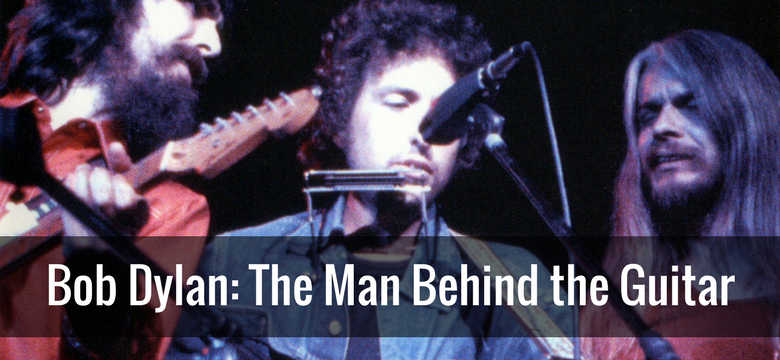To quote George Harrison during The Concert for Bangladesh, “We’d like bring on a friend to us all, Mr. Bob Dylan.”
Dylan’s career has spanned five decades and counting, encompassing a litany of artistic endeavors along with music, writing and painting. Though born Robert Zimmerman, Dylan changed his name in 1962. This was the same year that he debuted his first Columbia-released album titled “Bob Dylan.” The album went on to sell only 5,000 copies, which led to a discussion about dropping him from the label entirely. Shortly after, Dylan found his voice.
After releasing his second album, “The Freewheelin’ Bob Dylan,” Dylan’s reputation began to grow as a spokesman for a politically and socially charged generation. He focused on pointed political and cultural songwriting while also harkening back to the folk and gospel melodies that made up the fabric of Americana. Eventually, Dylan came to almost resent the artistic constraints of the protest movement as evidenced by his varying style choices for the subsequent albums that have followed.
Influencing a Generation
The extent of Dylan’s influence both politically and musically is undeniable. He’s received accolades ranging from a Pulitzer, a Nobel Prize in Literature and even a nod from President Obama, who quipped that “There is not a bigger giant in the history of American music.” Along with 120 million albums sold, Rolling Stone went on to rank Dylan as the greatest songwriter of all time in 2015.
Despite his late disinterest towards the musical constraints of the early to mid 60s protest movement, Dylan continued to be a polarizing figure. The quintessential example of both Bob Dylan’s artistic process and activism is evidenced at The Concert for Bangladesh in 1971. Organized by George Harrison and his close friend Ravi Shankar, this would be Dylan’s first performance on stage in two years and possibly the catalyst to him joining other legendary supergroups later in his career.
Beyond the defining moment this created in Bob Dylan’s life, The Concert for Bangladesh was the first major musical spectacle of its kind and scale – a benefit concert backed by superstars performing together. The concert was used as a platform to raise awareness and generate funds to aid refugees from the Bangladesh Liberation War. Headliners included the likes of The Beatles’ George Harrison and Ringo Starr, Eric Clapton, Billy Preston and Leon Russel. The artists performed for two nights in a packed arena and successfully raised over 200k for a UNICEF relief fund.
Harrison himself was not even sure Dylan would show up to perform until the very moment on stage. After finishing up a beautiful rendition of “Here Comes the Sun”, Harrison looked at the set list taped to his guitar, and saw “Bob?” He looked up to find Dylan waiting in the wings. Visibly nervous, Dylan calmly walked on stage carrying his Martin D-28 acoustic guitar and a pair of sunglasses. George Harrison, Ringo Star, and Leon Russel joined Dylan to play a handful of songs including; “Mr. Tambourine Man”, “Just Like A Woman”, “A Hard Rain’s a-Gonna Fall”, “It Takes a Lot to Laugh, It takes a Train to Cry” and more. These were songs that had not only been out of the public eye for some time but also featured fresh and iconic arrangements. This performance called back to a decade earlier when Dylan became the voice of a generation – a man and his acoustic guitar.
While the acoustic songs drove Dlyan’s initial success, he continued to experiment with his sound. From folk to blues, country, gospel, rock and roll, jazz, Irish folk, and yes, even a little bit of rap, Dylan has dipped his hands in almost every genre.
Acoustic or Electric?
One of Dylan’s most noted songwriting attributes was his ability to convey a powerfully caustic message in a pared down atmosphere. Dylan released albums that focused heavily on the electric guitar during his time as a musician; however, he leaned heavily on the acoustic guitar to provide the backdrop for his message in his early career.
The quintessential example of Dylan’s initial electric experimentation can be found in his performance at the Newport Music Festival in 1965. It’s speculated that Dylan made the decision to change the initially acoustic show to electric at the last minute due to an issue with a festival organizer. Even though some critics argue that this last minute change was met with mixed reviews, it marks an important chapter in the archives of music history (the Fender Stratocaster he played during his performance at the Newport Music Festival recently sold for $1 million).
Despite his contributions to the electric guitar, Bob Dylan will always be best known for his acoustic works. He went on to play a number of guitars, sometimes fluctuating between a Martin or a Gibson in the middle of a show. Along with the Stratocaster previously sold, collectors have a chance to bid on the only other Dylan guitar to go to auction – the Martin D-28 played during the Concert for Bangladesh. He also played this guitar during the entire Ruby Revue Tour 75-76 and countless other dates. Just as the guitar that Hendrix so famously burned on stage at The Monterey Pop Festival, there is something special about the D-28. It represents the reappearance of a timeless icon, the beginnings of a supergroup, and the start of a charitable platform that used music as a vehicle for change.
If you are interested in owning this incredible piece of history, the Martin D-28 acoustic guitar will be up for auction on November 11, 2017 in Heritage’s Entertainment Memorabilia Auction.
